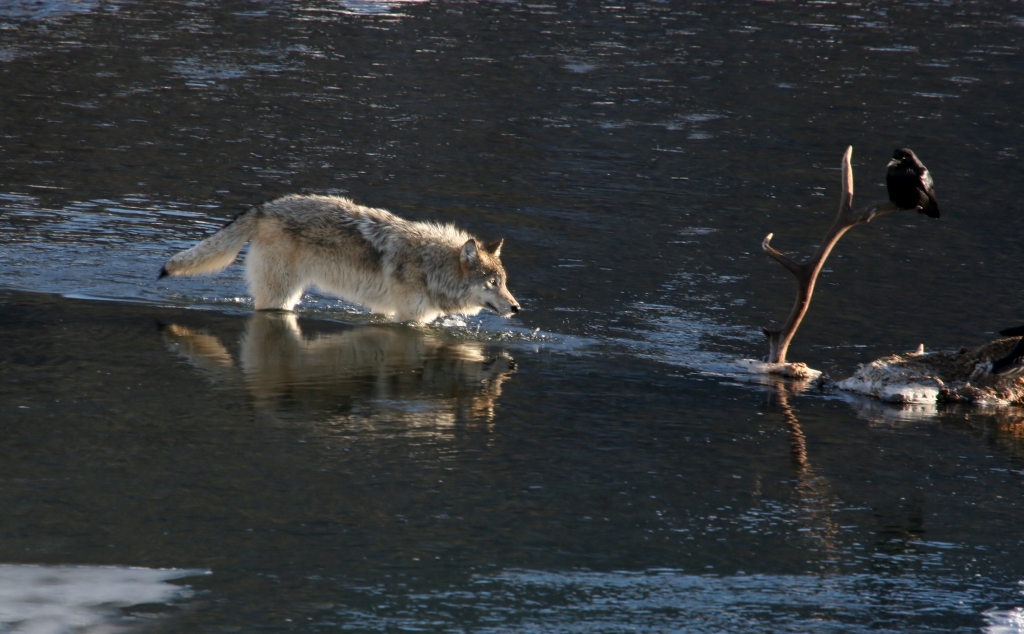Mark Ditmer discusses his and colleagues’ new research which aims to predict wolf movement and potential conflict hotspots following the state of Colorado’s decision to reintroduce gray wolves. This data may be used to offer practical, actionable recommendations for decision-makers.
Animal movement and conflict risk
Species’ ranges are shifting – and accurately predicting the way species disperse in novel areas can greatly enhance conservation efforts. Geographic changes in species’ ranges can result from conservation or restoration efforts, or in response to human pressures, such as habitat destruction or climate change. For controversial species prone to human-wildlife conflict, the ability to assess future movement through the landscape in combination with conflict risk is critical. It can mean the difference between proactive management efforts that minimize human-wildlife conflicts and costly, reactive measures to increased conflict that arise unexpectedly.
Recently, voters in the state of Colorado, USA, passed a first-of-its kind ballot initiative to reintroduce gray wolves to the state. To aid management efforts, we created spatially-explicit predictions of future wolf movement and potential conflict hotspots. Our aims were twofold:
- to assess landscape connectivity among large public land units that wolves may eventually occupy in Colorado
- to determine likely areas of conflict outside of these focal sites.
Our methods
To address these needs, we employed a Spatial Absorbing Markov Chain (SAMC) framework. This framework combines movement behaviour, conflict risk, and habitat quality to predict relative survival time (i.e., time to termination of movement), connectivity, and visitation counts (i.e., our proxy for philopatry/how long we predicted wolves would stay within a focal public land unit prior to dispersing).
SAMC offers a unique advantage by separating movement challenges from conflict risks, providing valuable insights into where wolves are likely to thrive and where conflicts may arise. The flexibility of the SAMC framework allowed us to better model the current policy situation as well – where wolves dispersing to neighboring states do not contribute to a viable population in CO and may face greater mortality risk without the same legal protections.
Our results and insights
Our results highlight two U.S. Forest Service managed Wilderness areas near Aspen—the Hunter-Fryingpan and Collegiate Peaks Wilderness — as offering the best overall conditions for wolf survival, connectivity to other public lands, and reduced conflict risk. These sites balance high-quality habitat, low livestock density, and strong social tolerance while being located near one another and with high connectivity to other large wilderness areas.
For management professionals overseeing species with changing geographic ranges, the SAMC framework can provide actionable insights. By identifying areas with suitable habitat, minimal conflict risks, and high connectivity, managers can make informed decisions about where to focus efforts and resources more efficiently and proactively for reducing conflict potential prior to dispersal or future changes in species’ occupancy. This strategic approach enhances the chances of a successful restoration efforts and minimizes the potential for conflicts with local communities.
Importantly, the SAMC framework can be refined and updated as more data becomes available. For instance, we intend to incorporate empirical movement, demographic data such as survival, and habitat selection data from GPS-collared wolves post-reintroduction to improve the accuracy of predictions. Additionally, the framework’s flexibility enables managers to adapt it to specific regional policies and species requirements.
Our conclusions
Our manuscript underscores the importance of using advanced frameworks like SAMC to predict future wildlife movement and conflict across space in dynamically changing ecosystems. Managers and other wildlife professionals are often faced with challenging situations where they must determine how to balance conservation goals with human-wildlife coexistence. For example:
- species translocations and reintroductions can be met with complex human reactions
- shifting geographic ranges can yield new challenges in places where species didn’t previously occur
- human tolerance can change over time and space.
The unique capacity of the SAMC framework to combine movement behavior, mortality risk, and conflict potential sets up managers for increased success in these scenarios and is promising for many similar situations in the future.
Read the full article “Predicting dispersal and conflict risk for wolf recolonization in Colorado” in Journal of Applied Ecology



